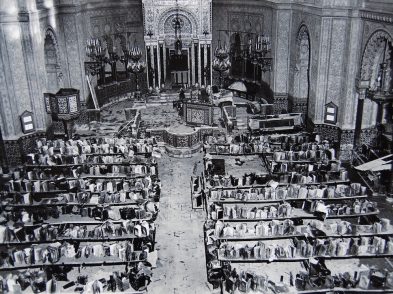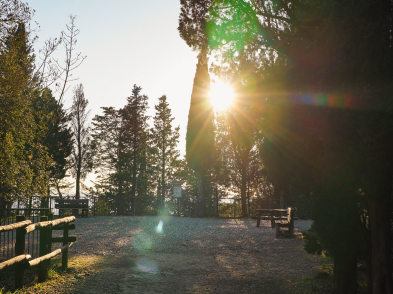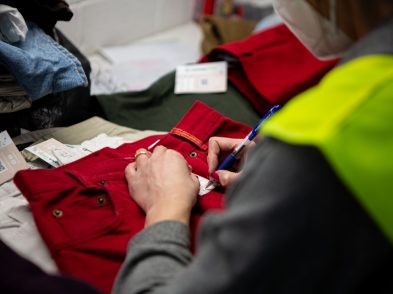Philippe Daverio is one of the greatest popularizers of art on Italian television and an important opinion leader (though he hates being called a ‘critic’). His TV program Passepartout, which ran for over a decade, is the prime example of his incredible ability to converse about literally any theme, using citations from every period of history, through multiple languages and methodologies. We were honoured to meet and interview Daverio at an event in The British Institute of Florence library, where we asked for his insights on some of the problems faced by Italian museums today.

Alexandra Korey: The Florentine represents an international community, and we’re art lovers, so it surprises us to hear that Italians don’t go to their museums. Recent ISTAT data shows that only 28% of Italians have visited a museum in the year previous to the survey, which is much lower than museum visits in the United Kingdom and elsewhere. Can you help us understand why this is the case? Is it a fundamental cultural difference?
Philippe Daverio: There is a pretty big difference between being part of the riforma and the controriforma. Italian culture does not conceive knowledge as duty. The idea that somebody has to be knowledgeable is, in a certain way, left to a small part of society. Italian society is very happy to know that 5% [of it] are educated. That 5% plays the role of ‘priest’, while the rest believes what the priest is saying. That makes a great difference. And if you don’t think about that, the idea of reformation cannot be accepted. In the idea of reformation, every man, as a chief of his family, builds up his own opinion about things. That’s why you have a culture which is much more transversal in the Northern world [of Europe, excluding America, and England only halfway].

England is a kind of middle road, where you go to the museum because you have to do something in the afternoon, you cannot waste your time. It is a different culture, not related to an idea of duty, but to an idea of having a good time. In England you go to the museum to see two or three things and go out again. It is a completely different behaviour. The American and German behavior, on the other hand, is one of duty, of faith in culture.
The Italians don’t care. They’re happy to know they have [culture], they tell you, ‘Yes, we have those! We’ve got 70% of the world’s cultural goods,’ or whatever, a number that isn’t true at all, certainly not nowadays… it doesn’t matter. But, the Italians are happy to say this, and that gives them the impression that culture is doing ok, and they don’t care to go to museums at all!
AMK: Can we fix that problem? Do you, as probably the most popularizing TV personality who speaks about art, have a plan to get people into museums, to get Italians to love their art?
PD: No, not at all. My plan is to talk to that 5% of [the reformed, educated] population, which is a great quantity of people, three million in Italy. I know perfectly well that I am never going to be able to involve more than that 5, or maybe 8, percent. We are never going to be able to touch the attention of half of the population. To go into that direction, you have to play with politics, go on variety TV shows or play soccer.

AMK: Is there something that we can do? You head up a campaign called ‘Save Italy’ that wishes to raise awareness amongst the international community that Italy’s heritage needs conservation. Can you tell us more about this campaign—and what we can do to help?
PD: It is a campaign to explain that Italy does not belong to the Italians. This country is much too important to be only related to the present Italian government. If there is a place where the idea of Europe was born, a place where language was born—not only the spoken languages, but the visual languages—where part of music was born, that’s Italy.
What I say seems to be rather rude, but I am convinced that Italy does not belong only to the Italians: Pompeii does not belong to Napoli, it is nonsense. Pompeii belongs to everybody who studies Latin, in Oxford and Cambridge [… and] not to those who are trying to sell oranges to tourists. Italy has to be saved by the international community; it won’t save itself.
AMK: And we hope to help do this! Do you think we can do something from a digital perspective, whether it be social media, blogging or technology in the museum, to try to recapture some of that lost public and save Italy’s culture and museums?

PD: I guess we have to invent a way of thinking about museums in the Internet, another way of communicating, which is already happening. The Internet gives access to the whole history of art. So does Internet help museums? Certainly. Is the Internet in competition with museums? I guess not. It is another world.
The world is changing, and in that sense one world is going to help the other one. And the sort of intelligence, the knowing of unknown things, that the Internet gives, is very high. We are building up a new mentality in studying, in young generations, in sharing information, and the museum is that part of reality which is necessary to give life to the virtual part.
This interview is dedicated to the memory of Hasan Niyazi, who believed that providing online access to the arts and art history was the key to its salvation. Some months ago, he asked me if I could help him get an interview with Philippe Daverio, who he admired deeply. Sadly, by the time I had this opportunity, Hasan was no longer with us. He left us too soon.







